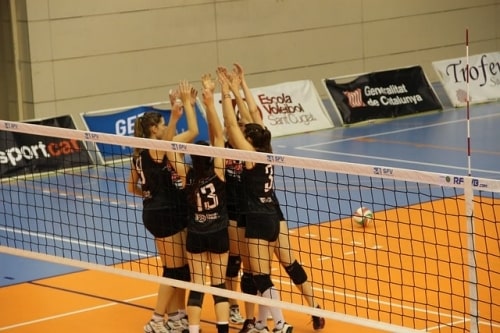History of Volleyball in Europe

The History of Volleyball in Europe: Introduction to Widespread Popularity
Volleyball, a dynamic and fast paced sport, has grown to be one of the most popular team sports in Europe. The journey of volleyball in Europe is a story of enthusiasm, adaptation and continuous growth, marked by significant milestones, championships and the rise of remarkable athletes.
This article will explore how volleyball reached Europe, how it gained popularity and some pivotal moments that shaped its evolution.
Origins and Introduction of Volleyball to Europe
Volleyball was invented in 1895 by William G. Morgan, a physical education director at the Young Men’s Christian Association (YMCA) in Holyoke, Massachusetts, USA. Originally called “Mintonette,” the sport was designed as a less strenuous alternative to basketball. The game quickly spread through YMCA networks, military personnel and missionary work.
In Europe, volleyball’s introduction coincided with the end of World War I. American troops stationed in Europe during the war played volleyball in their leisure time, sparking curiosity among locals. The sport was easy to set up, requiring minimal equipment, which allowed it to be adopted in various communities quickly.
First Steps in European Adoption
The first organized volleyball games in Europe took place in countries such as France, Italy and Czechoslovakia. After World War I, these countries began to embrace volleyball for its accessibility and emphasis on teamwork.
In 1924, the sport was demonstrated at the Paris Olympics, providing further exposure. Although it was not an official Olympic event at the time, this demonstration generated significant interest among European spectators. As the sport gained visibility, schools, universities and sports clubs began forming volleyball teams and hosting informal matches.
Formation of National Volleyball Federations
The 1930s were pivotal for volleyball’s growth in Europe, marked by the establishment of national federations. These organizations were crucial in standardizing the rules, organizing competitions and promoting the sport. Some of the earliest national federations include:
France: The French Volleyball Federation was founded in 1936 and played a central role in popularizing the sport in Western Europe.
Czechoslovakia: Volleyball thrived in Czechoslovakia due to a strong tradition of organized sports and a culture of athleticism.
Poland: The Polish Volleyball Federation was established in 1928 and was instrumental in fostering a competitive volleyball environment.
These federations created local leagues, developed training programs and encouraged international competition, laying the groundwork for volleyball’s expansion across Europe.
Post World War II Boom
After World War II, volleyball experienced a resurgence in Europe. The post war period saw a general revitalization of sports, with volleyball emerging as a preferred choice due to its low cost and ability to be played in various settings.
Establishment of the European Volleyball Confederation (CEV)
A major milestone came in 1963 with the founding of the Confédération Européenne de Volleyball (CEV). This governing body was responsible for overseeing all aspects of volleyball in Europe, including organizing continental competitions, setting standards and promoting the sport among youth and adults.
The CEV played a critical role in elevating the quality of volleyball in Europe by organizing the European Championships for both men and women. These competitions allowed European nations to compete at a high level, fostering rivalries and showcasing emerging talent.
Key Moments in European Volleyball History
European Volleyball Championships
The first Men’s European Volleyball Championship was held in 1948 in Rome, Italy, with six nations participating. The Soviet Union emerged victorious, marking the beginning of their dominance in the sport. The inaugural Women’s European Volleyball Championship took place in 1949 in Prague, Czechoslovakia, where the Soviet Union also claimed the title.
These championships grew in prestige over the years, attracting more nations and highlighting the continent’s volleyball prowess. The tournaments became a platform for showcasing innovative playing styles and strategies, which helped propel the sport’s popularity.
Soviet Dominance and Rivalries
Throughout the 1950s and 1960s, the Soviet Union established itself as a volleyball powerhouse. The Soviet teams, characterized by rigorous training, discipline and athleticism, dominated both men’s and women’s competitions.
Their success inspired other nations, including Poland, Czechoslovakia and East Germany, to invest heavily in their volleyball programs.
During this era, rivalries between the Soviet Union, Eastern European countries and Western European teams like Italy and France added drama and excitement to the sport, further drawing spectators and media attention.
Italy’s Golden Era
The 1990s marked a golden era for Italian men’s volleyball. The Italian national team, under coach Julio Velasco, won numerous European Championships, World Championships and World League titles.
Players like Andrea Giani, Lorenzo Bernardi and Samuele Papi became household names and Italy’s tactical innovation and powerful playstyle influenced volleyball strategies worldwide.
Italy’s success sparked a surge in volleyball’s popularity across the country and Western Europe. The professional league, known as the Serie A1, became one of the most competitive and lucrative volleyball leagues in the world.
Growth of Women’s Volleyball
Women’s volleyball also saw remarkable growth in Europe. Nations like the Soviet Union, Poland and Serbia have consistently produced world class female volleyball players. In recent years, countries like Turkey have invested heavily in women’s volleyball, creating competitive domestic leagues and fostering international success.
Turkey’s VakifBank Istanbul and Eczacıbaşı VitrA clubs have dominated European competitions, showcasing the increasing level of skill and professionalism in women’s volleyball.
Volleyball in the Olympics
Volleyball was officially included in the 1964 Tokyo Olympics, further boosting its profile. European teams have consistently been among the medal contenders. Notable Olympic achievements include:
- The Soviet Union’s gold medals in both men’s and women’s volleyball in the 1960s and 1980s.
- Italy’s men’s team securing silver and bronze medals in multiple Olympic Games.
- Serbia’s women’s team winning silver in Rio 2016 and gold in Tokyo 2020.
These Olympic successes cemented volleyball’s place as one of Europe’s premier team sports.
Conclusion
The history of volleyball in Europe is a testament to the sport’s adaptability, excitement and broad appeal. From its introduction by American soldiers to the establishment of major European competitions, volleyball has evolved into a sport cherished by millions.
Key moments, such as the formation of national federations, the dominance of the Soviet Union, Italy’s golden era and the growth of women’s leagues, have all played crucial roles in making volleyball a beloved and respected sport across Europe.
Today, volleyball continues to thrive in Europe, with passionate fans, professional leagues and a new generation of athletes keeping the spirit of the game alive.


